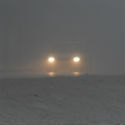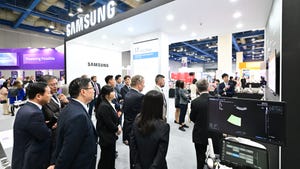ARM Champions Fog, Not Just Edge Computing, for 5G
UK chipmaker believes the distributed cloud, or fog, model will address 5G requirements in a way that edge computing alone cannot.

BERLIN -- MEC Congress 2017 -- A representative from UK chipmaker ARM has insisted that a focus on edge computing will be insufficient for the needs of future 5G networks and that operators will have to carry out a more comprehensive overhaul based on the principles of a distributed cloud, or fog, model.
"Computing at the edge will not be sufficient for the future networks," stated Gunnar Bergman, a technical manager with ARM Ltd. , here in Berlin. "We need to have a distributed cloud."
Bergman's remarks point to the uncertainties that still surround the design of future next-generation networks as network operators look to redeploy IT resources much closer to end-user devices, cutting latency and improving efficiency.
In today's networks, IT resources are typically located in centralized data centers, processing information that is sent back from gateways and basestations at the "edge" of the network.
But there is growing concern that such architecture will not be able to support a range of new 5G services that require extremely low latency -- a delay that occurs when sending signals over data networks.
Industry group ETSI has for the past couple of years been working on a standard for edge computing that would allow operators to locate IT resources at (or very near) basestations and other edge network equipment. (See ETSI Gets Edgy About Mobile.)
In the meantime, several other organizations have sprung up with slightly contrasting visions of the future telco network.
The OpenFog Consortium , one of the most prominent, is backed by some of the world's biggest IT companies, including ARM, Cisco Systems Inc. (Nasdaq: CSCO), Dell Networking , Intel Corp. (Nasdaq: INTC) and Microsoft Corp. (Nasdaq: MSFT), and has been championing an alternative it calls fog computing/networking.
"Edge computing is about placing computing at the edge of the network," said Steve Vandris, the director of IoT and 5G solutions in Intel's datacenter network solutions group, in Berlin this week. "The difference with fog is that the computing resources are distributed throughout the network. Each fog node can offload to neighbors in all directions. It is a truly distributed hierarchical cloud."
With fog computing, a node could reside in the end-user device itself or be located in the very heart of the network, in a centralized data center.
The European Telecommunications Standards Institute (ETSI) and OpenFog have been trying to play down their differences and highlight the opportunity for closer collaboration. Just this week, the two organizations said they would work together on defining the application programming interfaces that will link computing assets to the applications that need to use them. (See Edging Closer: ETSI & OpenFog Team on Edge Computing APIs.)
Yet there is a growing sense that edge computing as defined by ETSI could end up as a relatively small part of the distributed cloud picture.
"You cannot just have computing close to the basestation. You need computing capability higher up in the network as well," said Bergman during a presentation on Monday afternoon. "You need to be able to distribute to where it makes most sense and that is what OpenFog is about -- putting compute and storage where it is most useful."
For all the latest news from the wireless networking and services sector, check out our dedicated mobile content channel here on Light Reading.
Nurit Sprecher, the ex-chair of the edge-computing group within ETSI and an executive at Finnish equipment vendor Nokia Corp. (NYSE: NOK), says it is wrong to view edge computing and fog computing as competing initiatives. She also takes issue with suggestions that edge computing as defined by ETSI will not support the same "offload" capabilities as fog computing.
"Edge computing is part of the distributed cloud and not competing [with fog]," she said at the Berlin event. "It is not accurate that edge computing doesn't have the east-west interface. We have that."
At last year's MEC World Congress, ETSI announced plans to change the name of its edge computing group from "mobile edge computing" to "multi-access edge computing" to satisfy operators that believe edge computing should not be limited to mobile networks. (See ETSI Drops 'Mobile' From MEC.)
ARM's chip designs power many of the world's most popular smartphones and the company is now eyeing a bigger role in the data center market currently dominated by US chip giant Intel. Last year, it was acquired by Japan's SoftBank in a £24.3 billion deal. (See SoftBank Muscles In on ARM in $32B Deal.)
— Iain Morris, News Editor, Light Reading
Read more about:
EuropeAbout the Author(s)
You May Also Like












